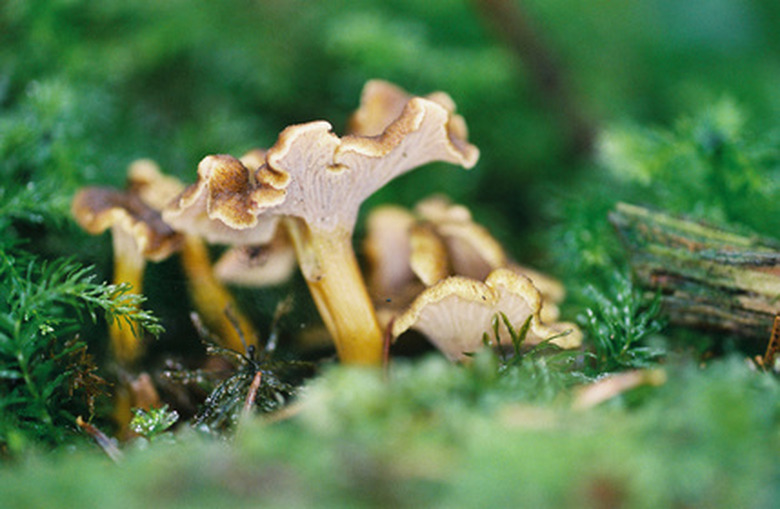Mushroom Hunting In Colorado
Mushroom hunting is a popular and rewarding hobby in many places across the country. Many people enjoy learning to identify, pick, and cook mushrooms, especially in Colorado. The state's climate makes it an excellent and plentiful mushroom hunting ground. Because mushrooms can be poisonous and tricky to identify, it's a good idea to know a little about the mushrooms of Colorado before going hungting.
When to Hunt
When to Hunt
The mushroom hunting season in Colorado begins in April and lasts through September. (References 2) Many species emerge at different times and depend on weather conditions, but the peak of mushroom activity is usually in August. Pay attention to the weather; mushrooms like damp conditions, so after a warm, heavy rainfall is an excellent time to hunt. (References 1)
Where to Look
Where to Look
Most Colorado mushrooms grow in association with trees, so look in coniferous or hardwood forests. The Colorado Mycological Society (CMS) recommends hunting up a slope until you find mushrooms because it is harder to spot them coming down a slope. In spring, check for mushrooms around the edges of melting snowbanks. (References 2) The Colorado Mycological Society keeps an extensive list of campgrounds and other forested areas where mushrooms are common (see Resources).
Common Edible Colorado Mushrooms
Common Edible Colorado Mushrooms
Common edible mushrooms of Colorado include morels, chanterelles, and puffballs. Morels are found in river bottomlands beneath leafy trees such as elm. Look for chanterelles in moist, dark areas. They too depend on trees, so look in heavy stands of timber. Puffball mushrooms can be found in open fields and on forest logs; they grow at most elevations in Colorado. (References 3)
Safety
Safety
Because some mushrooms are poisonous, it is extremely important to positively identify all mushrooms before eating them. A high quality field guide is useful for this. Even if a mushroom has been identified as edible, it is a good idea to eat it only in moderation at first, and only after cooking. Some people have allergic reactions to some types of mushrooms, so be careful when eating a species for the first time. Mushrooms can have a toxic reaction when combined with alcohol, so do not drink while eating mushrooms. (References 2)
Selling and Preserving your Mushrooms
Selling and Preserving your Mushrooms
Many people choose to make some money selling their wild mushrooms to local restaurants and hotels. Some of the rarer species can fetch $75 per pound. (References 3) Mushrooms can also be preserved for use year-round. Freezing is an easy way to store large quantities; you can even saute the mushrooms in oil or butter before freezing. Mushrooms can also be blanched or steamed before freezing. (References 4)
Cite This Article
MLA
Bryant, Katherine. "Mushroom Hunting In Colorado" sciencing.com, https://www.sciencing.com/mushroom-hunting-colorado-6663492/. 22 November 2019.
APA
Bryant, Katherine. (2019, November 22). Mushroom Hunting In Colorado. sciencing.com. Retrieved from https://www.sciencing.com/mushroom-hunting-colorado-6663492/
Chicago
Bryant, Katherine. Mushroom Hunting In Colorado last modified March 24, 2022. https://www.sciencing.com/mushroom-hunting-colorado-6663492/
